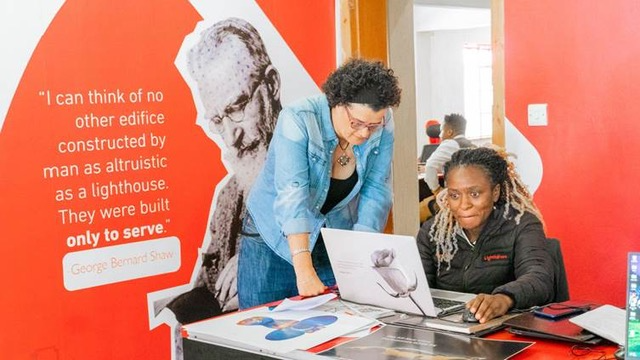Automation tends to excite people because it is seen as the answer to many problems or the source of many others. The local printing industry tends to be wary of automation but if it is approached with a clear plan, it can be a rising tide that lifts all boats.
Having witnessed the print industry fundamentally change over the past 30 years, Bronwyn Macfayden, who is part of the training team for Altron Document Solutions, regards automation as a vehicle to free up operators’ time for tasks that only humans can do – a belief well illustrated with an anecdote from her past.
Macfadyen wanted to be a graphic designer but a lack of funds for further studies saw her become a printshop apprentice after completing matric in the mid-1990s. The printshop where Macfayden worked was asked to produce prints a well-known photographer had taken. The operators ran the photographs through the automated conversion processes and presented the photographer with the proofs – which she rejected out of hand on colour and quality grounds.
Macfayden stepped in and with her background in pre-automated print processes and design, could work with the photographer to manually do the fine-tuning that would do justice to the photographic works of art. ‘I spent a full day with her to get it right, but after that, we were the only printshop she would allow to print her work.’
Devoting an entire day of a skilled employee’s time to getting one job out sounds like poor business practice. Not so, countered Macfayden. ‘When the rest of your operation runs full tilt and churns out perfect jobs, you can afford to give that kind of time to one customer. It comes down to the difference between run-of-the-mill jobs and high-end, bespoke projects. You want to automate the former so that you have the time to spend on the latter.’
The Automation Sweet Spot
Fundamental to the success of any print job is the quality and accuracy of the artwork that comes into the printshop. Macfayden noted that artwork management includes many repetitive tasks and ‘that’s what we want to automate. I always look at the pre-press department first, even before considering automating admin tasks, because artwork preparation is where the biggest and most costly errors happen.’
Macfayden’s advice is to automate 80-90% of routine jobs – business cards, leaflets and the like – in the pre-press department and free up operators to ensure the 10% high-value jobs are perfectly prepared before they hit the presses. ‘That is the automation sweet spot,’ she reiterated.
One of the great benefits of automation, said Macfayden, is that it has opened the field of design and print for untrained people: you issue the instruction, and the software takes care of the technicalities. This strength, however, is also the reason why standardisation is not suited for specialist projects, such as photography.
People And Relationships
The other argument against wholesale automation involves human emotions. Macfayden learnt this lesson in the early days of automation when she implemented a process where a client could upload a piece of artwork, and the system automatically started prepping it for print. ‘I thought it was fantastic, but our customers hated the system and I couldn’t figure out why, until my boss reminded me that businesses are built on connection and relationships. And that remains true today: it is still about relationships and the feeling that there’s someone on the other end of the line who has a handle on what you need.’
Value Creation
Macfayden thinks that the automation focus wrongly zooms into what will be lost instead of the substantial gains. Owners look at automation as a cost cutter and workers see it as a destroyer of their jobs. It should be seen as neither because it can create value for all concerned.
‘Automation is expensive and in South Africa, there are areas not worth automating because the cost of the investment far outstrips wages,’ Macfayden explained. ‘By the time the investment has paid for itself, technology would have moved on again, so you’re always playing catch-up in terms of money and production.’
The solution is to automate smart. Pre-press operators can complete more routine jobs in a day, which keeps the presses running. And, as mentioned before, when the specialist jobs come in, the skilled operators can set aside the time to attend to them.
Simultaneously, automating routine tasks frees up time to upskill workers who currently sit at the lower end of the value chain. And this, Macfayden said, is becoming a pressing need in the print industry. ‘Today’s highly skilled operators grew up in print and understand the entire process, but they are an ageing demographic. When they retire, those skills will be lost and with it the ability to produce finished jobs of the highest quality – which are also the most lucrative jobs for a printshop.’
This trend is not a South African phenomenon. The global print industry is investing in apprenticeships that combine an in-depth understanding of the basic techniques of printing with the new age of automation and artificial intelligence. Locally, Printing SA is working closely with some of the larger print companies to present a series of courses that cover the various processes of printing, from estimating and design, to post-press finishing in both digital and litho printing.
With automation taking care of the mundane, South Africa’s print industry can prepare itself for the future.
ALTRON DOCUMENT SOLUTIONS
+27 11 928 9111
hotline.marketing@bdsol.co.za
www.altron.com
https://www.bdsol.co.za





















